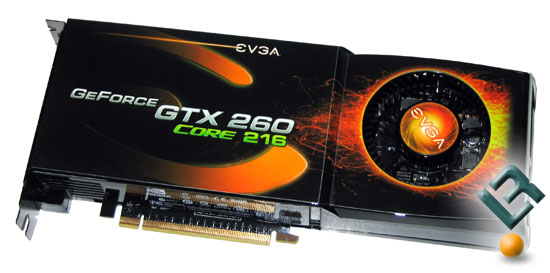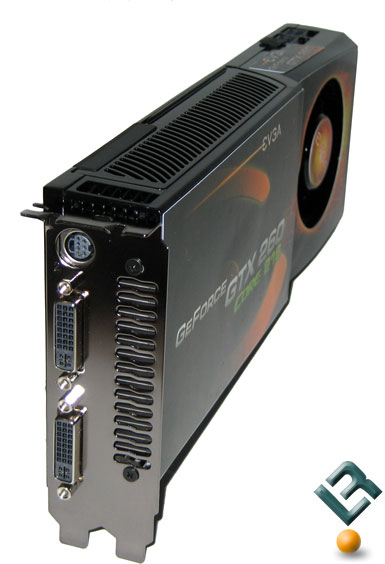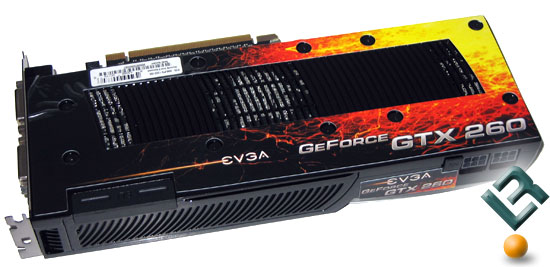EVGA GeForce GTX 260 Core 216 Superclocked Video Card
The EVGA GeForce GTX 260 Core 216

The card that I have for testing is the EVGA GeForce GTX 260 Core 216 Superclocked Edition. This graphics card is obviously overclocked from the factory and is a little more expensive as a result.

The SuperClocked version of the EVGA GeForce GTX 260 is $20 more expensive, but features a 50MHz higher core clock, 106MHz higher memory clock and a 108MHz higher shader clock frequency. The EVGA website doesn’t list shader clock frequencies, but a stock card is 1242MHz and the SuperClocked edition runs at 1350MHz.

The GeForce GTX 260 Core 216 remains the same on the outside and sports a pair of 6-pin PCI Express power headers that are required to run the graphics card. When it comes to the power supply be sure to have at least a 500 Watt model that offers a minimum of 36 Amps on the +12 Volt rail for things to run correctly. When it comes to hooking up monitors the GeForce GTX 260 Core 216 features two dual-link, HDCP-enabled DVI-I outputs for connection to analog and digital PC monitors and HDTVs, a 7-pin analog video-out port that supports S-Video directly, plus composite and component (YPrPb) outputs via an optional dongle.

The back of the card looks just like any other GeForce GTX 260, so let’s move along to benchmarking!

Comments are closed.